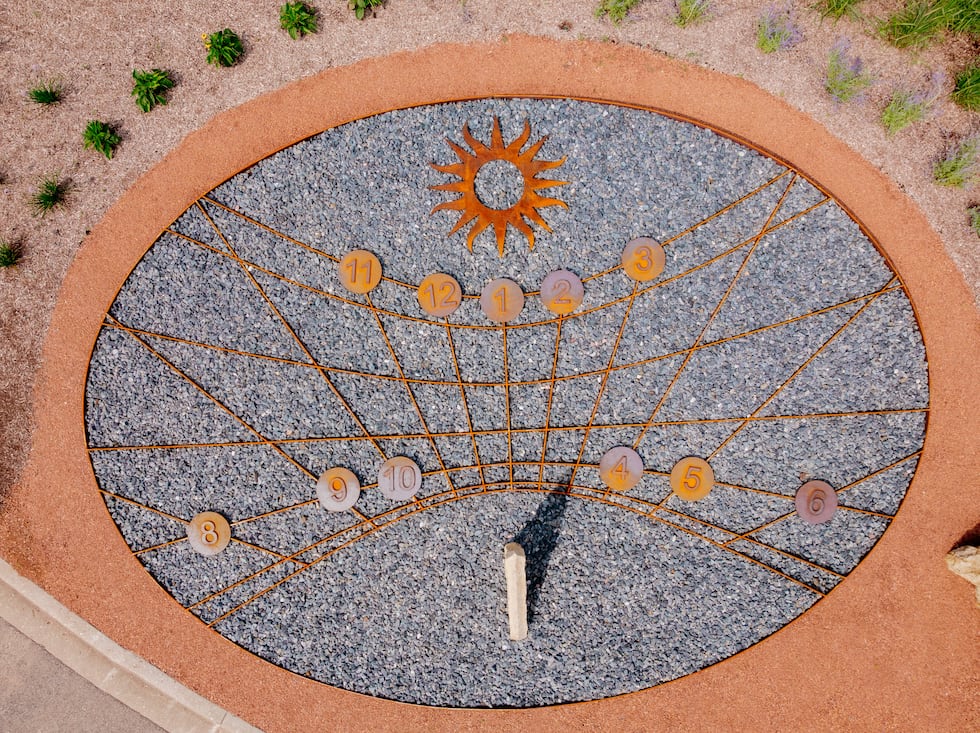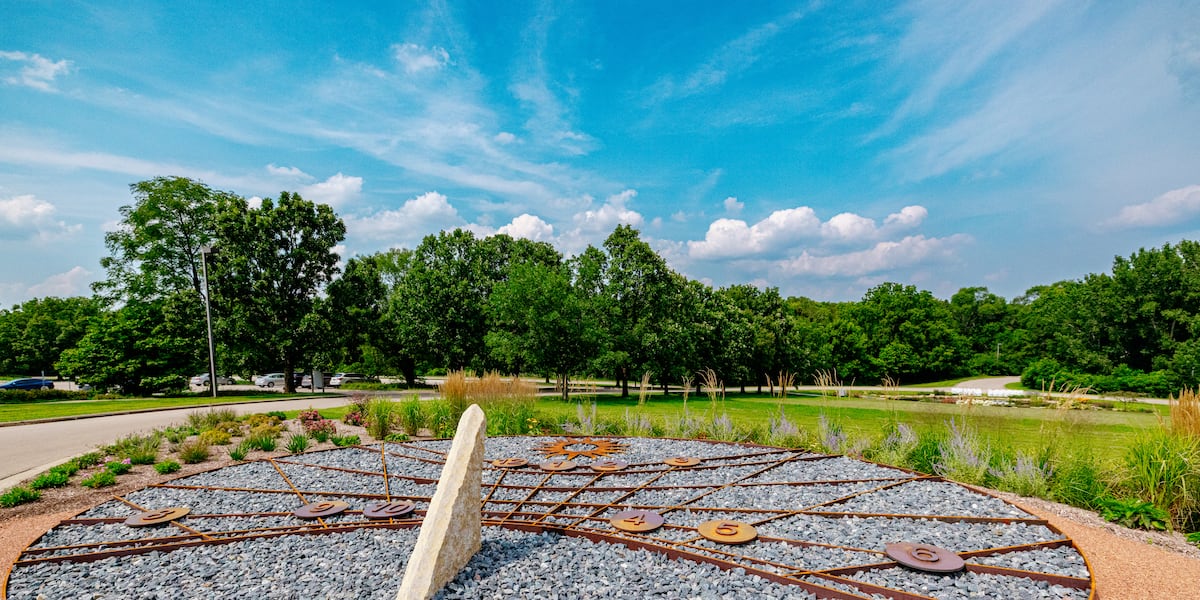ROCKFORD, Ill. (WIFR) – Daylight is lost early these days thanks to the end of daylight saving time on November 2nd.

While the sun is on the horizon, the Klehm Arboretum & Botanic Garden displays one of nature's most impressive works of art thanks to a new permanent facility.
“It's basically a device that uses the sun as it travels across our sky,” Klehm CEO Alex Mills told WIFR. “The shadows then hit markings on the ground or structure that tell the time.”
The Harezlak Family Sundial is dedicated to Jean and Dennis Harezlak and their family in honor of Jean's life and legacy.

A typical sundial essentially consists of two parts: a flat circular plate and a staff known as a gnomon, which casts a shadow on the plate to tell the time.
“Our shadows are getting longer as our days get shorter and the shadows get longer,” Mills said. “It's really fun to see how the sun interacts in the sky, and this feature makes it really cool to tell time.”
Mills says you can see the sundial in action from sunrise to sunset, but starting at 10 a.m. to 2 p.m. is a great time to catch some star shadows.
This sundial was made from limestone, Corten steel and decorative gravel. These structures must be designed with precise geometric measurements to ensure accurate timekeeping.
“If you don't get the science right, it doesn't tell the time. It doesn't work, so the science tells you exactly how tall the stone has to be, the stone is called a gnomon, the science tells you exactly what angle you have to cut the stone at, and that's the same as our latitude here on the planet, by the way,” Mills explained.

Klehm leaders say the landscape around the sundial was intentionally designed for fall, with grasses that change color and accents that highlight the shadows in the foliage.
The earliest known sundials come from ancient Egypt, where obelisks were used to cast shadows to indicate the time of day.
The fee for visiting Klehm's sundial is included in the day admission. Opening times, admission and membership details can be found at klehm.org.
Copyright 2025 WIFR. All rights reserved.
